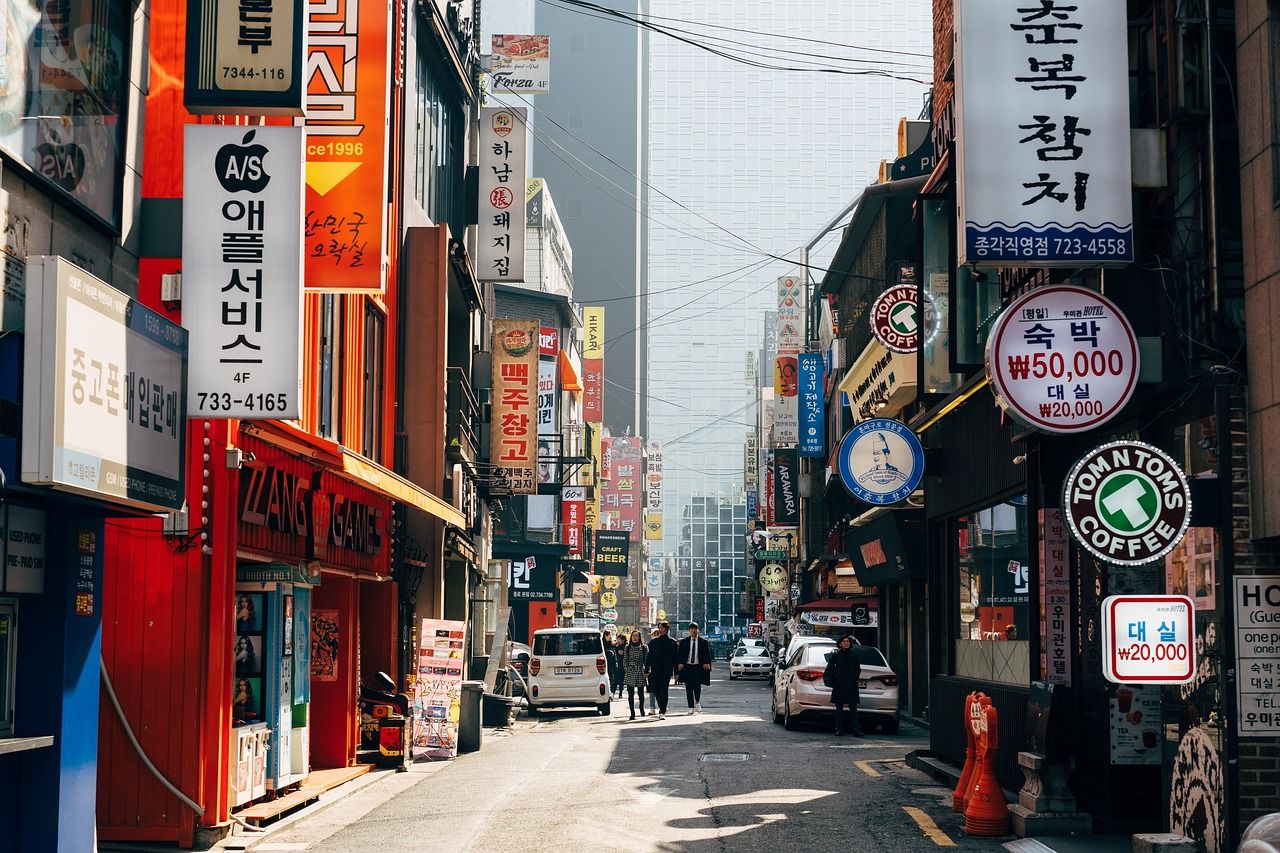


Introduction to Seoul
Seoul, officially known as Seoul Special Metropolitan City, is South Korea’s capital and largest city. Situated amidst mountains and hills, Seoul boasts a rich history dating back to its founding by Baekje during the Three Kingdoms era of Korea in 18 BC. Today, Seoul ranks seventh on both Global Power City Index and Global Financial Centres Index, offering visitors five UNESCO World Heritage Sites alongside iconic architectural developments such as N Seoul Tower and Trade Tower.
Key Attractions and Points of Interest
Seoul’s skyline is graced by landmarks including the Gyeongbok Palace (Hwaseong Fortress), Changdeokgung, Namhansanseog, Banghoe-eui Boori Buri (“Boat Food”), and Jongmyo Segewa. These attractions contribute to Seoul’s appeal as a travel destination.
# Gyeongbok Palace (Hwaseong Fortress)
The Hwaseong Fortress dates back to the Joseon dynasty, featuring four gates: Sung-san-gu, Jinnallee 1000 wonshu, Yeojwa River, and Hongjivere. The palace is an architectural wonder offering visitors a glimpse into Seoul’s historical background through its museums, palaces, and parks.
# Changdeokgung Palace UNESCO World Heritage Site
Changdeokgung Palace was built during the Joseon dynasty in 1412 AD as a royal palace for Korean kings. The palace remains one of Seoul’s architectural marvels that visitors can explore while learning about Korea’s history. Today, Changdeokgung serves as both UNESCO World Heritage Site and museum to educate tourists on the Joseon dynasty.
# Namhansanseog UNESCO World Heritage Site
Nestled in Seoul’s hilly terrain is Namhansanseog Fortress, offering visitors an opportunity to explore Korea’s historical background through its palaces, parks, and museums. The fortress dates back to the Joseon dynasty when it was constructed as a military camp for Korean kings, making it another UNESCO World Heritage Site alongside Changdeokgung Palace.
Cultural and Historical Context
Seoul’ cultural heritage is enriched by local customs such as boori buri (“boat food”), which offers visitors an opportunity to explore Korea’s culinary history through its museums, parks, and palaces. This historical context adds depth to understanding Seoul, contributing to the city’s appeal for tourists worldwide.
Practical Information for Visitors
Seoul’s weather varies throughout seasons, with summers being hot and humid while winters are cold. Tourists visiting during spring or autumn can enjoy pleasant temperatures ideal for exploring Korea’s historical background through its parks, palaces, museums, and UNESCO World Heritage Sites like Changdeokgung Palace and Namhansanseog Fortress.
Tourists should be mindful of Seoul local customs when dining in restaurants or visiting the palace during mealtime hours (boori buri). Visitors should also research Seoul’s historical background through its parks, palaces, museums, UNESCO World Heritage Sites like Changdeokgung Palace and Namhansanseog Fortress.
Conclusion: Why Seoul is Worth a Visit
Seoul remains one of Asia’s most livable cities with the second-highest quality of life globally according to Arcadis in 2015, offering visitors an opportunity to explore Korea’s historical background through UNESCO World Heritage Sites like Changdeokgung Palace and Namhansanseog Fortress. Seoul boasts iconic architectural developments such as N Seoul Tower, Trade Tower alongside cultural landmarks like Banghoe-eui Boori Buri (“Boat Food”). These factors contribute to Seoul’s appeal as a travel destination worldwide.
Source: Seoul Wikipedia
🇰🇷 한국어 보기 (View in Korean)
서울 소개
공식적으로 서울 스페셜 메트로폴리탄 도시로 알려진 서울은 한국의 수도이자 가장 큰 도시입니다. 산과 언덕 속에 위치한 서울은 기원전 18 년에 한국의 세 왕국 시대에 백제의 창립으로 거슬러 올라가는 풍부한 역사를 자랑합니다. 현재 서울은 Global Power City Index와 Global Financial Centers Index에서 7 위를 차지하여 N Seoul Tower 및 Trade Tower와 같은 상징적 인 건축 개발과 함께 5 개의 UNESCO World Heritage 사이트를 제공합니다.
주요 명소 및 관심 지점
서울의 스카이 라인은 Gyongbok Palace (Hwaseong Fortress), Changdeokgung, Namhansanseog, Banghoe-Eui Boori Buri ( “Boat Food”) 및 Jongmyo Segewa를 포함한 랜드 마크로 장식됩니다. 이 명소는 서울의 여행 목적지로서의 호소에 기여합니다.
# Gyeongbok Palace (Hwaseong Fortress)
Hwaseong Fortress는 Joseon 왕조로 거슬러 올라갑니다. Sung-San-Gu, Jinnallee 1000 Wonshu, Yeojwa River 및 Hongjivere와 같은 4 개의 문이 있습니다. 궁전은 박물관, 궁전 및 공원을 통해 방문객들에게 서울의 역사적 배경을 엿볼 수있는 건축 경이입니다.
# Changdeokgung Palace 유네스코 세계 문화 유산
Changdeokgung Palace는 1412 년 조종 왕조에서 한국 왕을위한 왕궁으로 지어졌습니다. 이 궁전은 한국의 역사에 대해 배우면서 방문객들이 탐구 할 수있는 서울의 건축 경이로움 중 하나입니다. 오늘날 Changdeokgung은 유네스코 세계 문화 유산과 박물관으로 일하면서 조슨 왕조 관광객을 교육합니다.
# Namhansanseog 유네스코 세계 문화 유산
서울의 언덕이 많은 지형에 자리 잡은 Namhansanseog Fortress로, 방문객들에게 궁전, 공원 및 박물관을 통해 한국의 역사적 배경을 탐험 할 수있는 기회를 제공합니다. 요새는 한국 왕을위한 군용 캠프로 지어 졌을 때 조슨 왕조로 거슬러 올라갑니다.
문화 및 역사적 맥락
서울의 문화 유산은 Boori Buri ( “Boat Food”)와 같은 현지 관습에 의해 풍성해졌으며, 이는 방문객들에게 박물관, 공원 및 궁전을 통해 한국의 요리 역사를 탐험 할 수있는 기회를 제공합니다. 이 역사적 맥락은 서울을 이해하는 데 깊이가 더해져 전 세계 관광객들에게 도시의 호소에 기여합니다.
방문자를위한 실용 정보
서울의 날씨는 계절마다 다르며, 겨울은 차갑고 여름은 뜨겁고 습합니다. 봄이나 가을 동안 방문하는 관광객들은 공원, 궁전, 박물관 및 창고 룽 (Changdeokgung Palace)과 나머 산지 요새와 같은 유네스코 세계 문화 유산을 통해 한국의 역사적 배경을 탐험하는 데 이상적인 기온을 즐길 수 있습니다.
관광객들은 식당에서 식사를하거나 식사 시간 시간 동안 궁전을 방문 할 때 서울 현지 관습을 염두에 두어야합니다 (Boori Buri). 방문객들은 또한 공원, 궁전, 박물관, Changdeokgung Palace 및 Namhansanseog Fortress와 같은 유네스코 세계 문화 유산을 통해 서울의 역사적 배경을 조사해야합니다.
결론 : 왜 서울이 방문 할 가치가 있는가
서울은 2015 년 Arcadis에 따르면 전 세계적으로 두 번째로 높은 삶의 질을 가진 아시아에서 가장 살기 좋은 도시 중 하나이며, 방문객들은 Changdeokgung Palace 및 Namhansanseog Fortress와 같은 유네스코 세계 문화 유산을 통해 한국의 역사적 배경을 탐험 할 수있는 기회를 제공합니다. 서울은 N Seoul Tower, Banghoe-Eui Boori Buri와 같은 문화적 랜드 마크 ( “보트 음식”)와 같은 상징적 인 건축 개발을 자랑합니다. 이러한 요소는 전 세계 여행 목적지로서 서울의 호소에 기여합니다.

답글 남기기